Length: 21 inches, Wing span: 30 inches
Broadly distributed in South and Central America, the Black-bellied Whistling-Duck’s range reaches into the southern U.S. Typically mating for life, Black-bellied Whistling-Ducks nonetheless occasionally change mates, and will re-mate after the death of one of the pair.
Male and female Black-bellied Whistling-Ducks share incubation duties, and typically trade 24-hour shifts. Multiple females often lay eggs in the same nest, leading to very large clutch sizes in some cases. Such nests are less likely to hatch.
On this page
BREEDING MALE
The Black-bellied Whistling-Duck is mostly reddish-brown, with a black belly, a gray face, a white eye ring, and a reddish orange bill. The leading edge of the wing is similar to the chestnut color of the body. The secondary coverts are white. Black primaries have a white base. Long wing stripe visible in flight. Length: 21 in. Wingspan: 30 in.
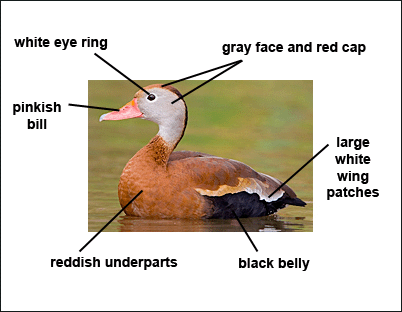
Female
Sexes similar.
Seasonal change in appearance
None.
Juvenile
Gray belly, paler body, dark legs and dark grey bill.
Habitat
Marshes and ponds.
Diet
Seeds and grains.
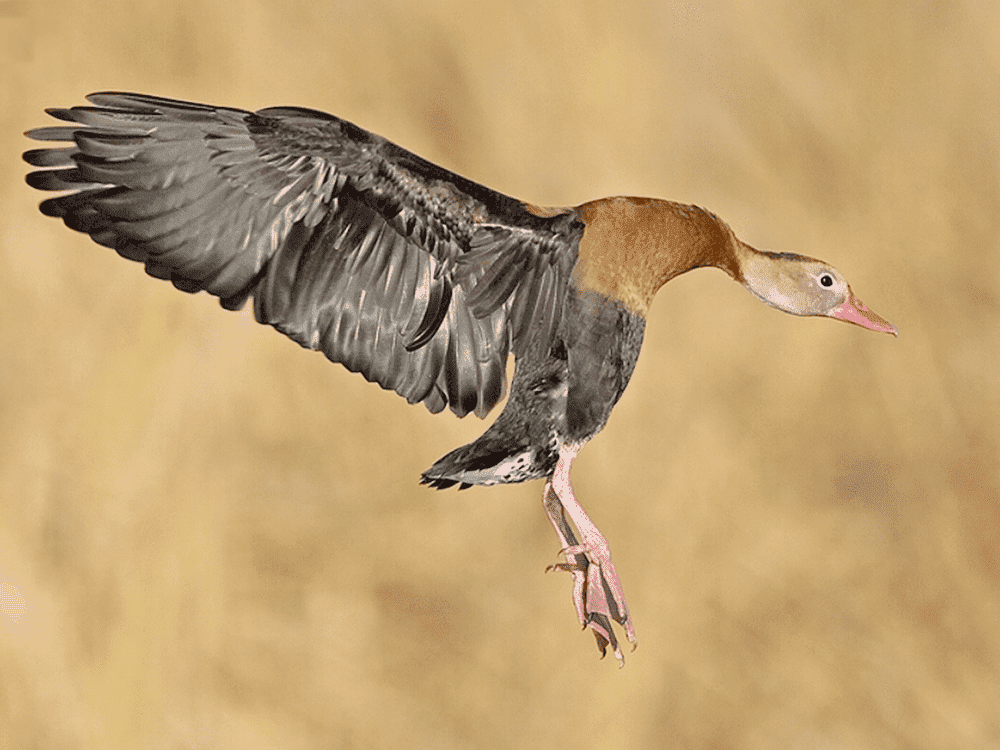
Photograph © Alan Wilson
Behavior
Forages mostly on land, but sometimes dabbles.
Range
Occurs in the southernmost U.S., and south to South America. Population increasing.
More information:
Bent Life History
Visit the Bent Life History for extensive additional information on the Black-bellied Whistling Duck.
Fun Facts
Black-bellied Whistling-Ducks have expanded their range northward in recent years, but these northern breeders often move south for the winter, while most others are resident year-round.
Black-bellied Whistling-Ducks typically pair for life.
Vocalizations
A four-note whistle.
Attracting
Black-bellied Whistling-Ducks will use nest boxes.
Similar Species
Fulvous Whistling-Ducks lack black bellies and have extensive black on their wings and back.
Immature Fulvous Whistling-Duck could be confused with an immature Black-bellied Whistling-Duck. Fulvous has a white stripe on the side and dark wings without a wing stripe.
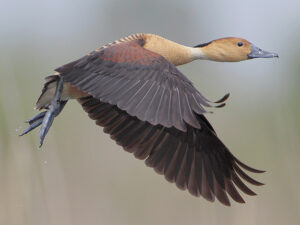
Fulvous Whistling-Duck
Nesting
The nest is in a tree cavity or nest box.
Number: 12-16.
Color: Whitish.
Incubation and fledging:
– Young hatch at 25-30 days.
– Young fledge (leave the nest) 1-2 days after hatching days but remain with the adults for some time.
Bent Life History of the Black-bellied Whistling-Duck
Published by the Smithsonian Institution between the 1920s and the 1950s, the Bent life history series of monographs provide an often colorful description of the birds of North America. Arthur Cleveland Bent was the lead author for the series. The Bent series is a great resource and often includes quotes from early American Ornithologists, including Audubon, Townsend, Wilson, Sutton and many others.
Bent Life History for the Black-bellied Whistling-Duck – the common name and sub-species reflect the nomenclature in use at the time the description was written.
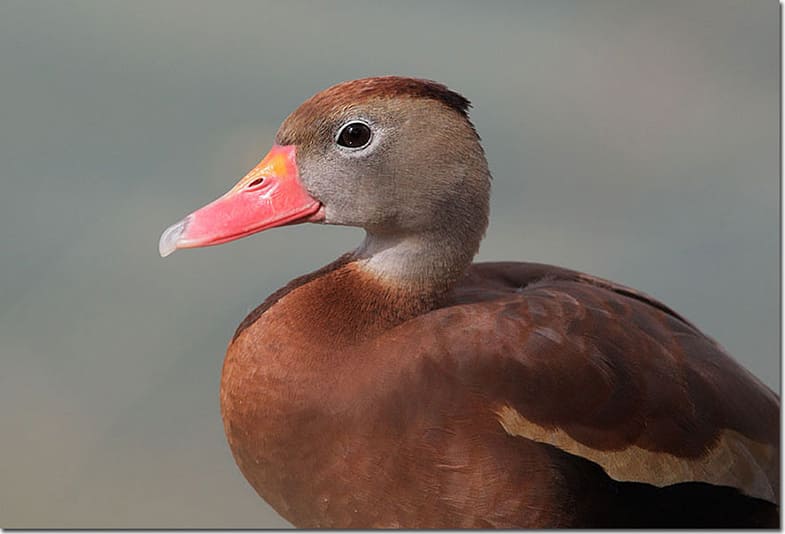
Reddish bill, gray face and reddish chest and upper parts. Photograph © Tom Grey.
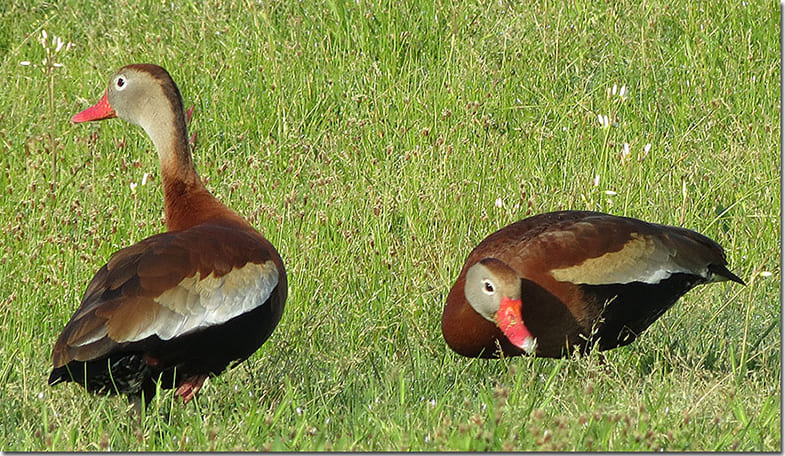
Wings paler than body. Dark crown and back of neck. Photograph © Sam Crowe
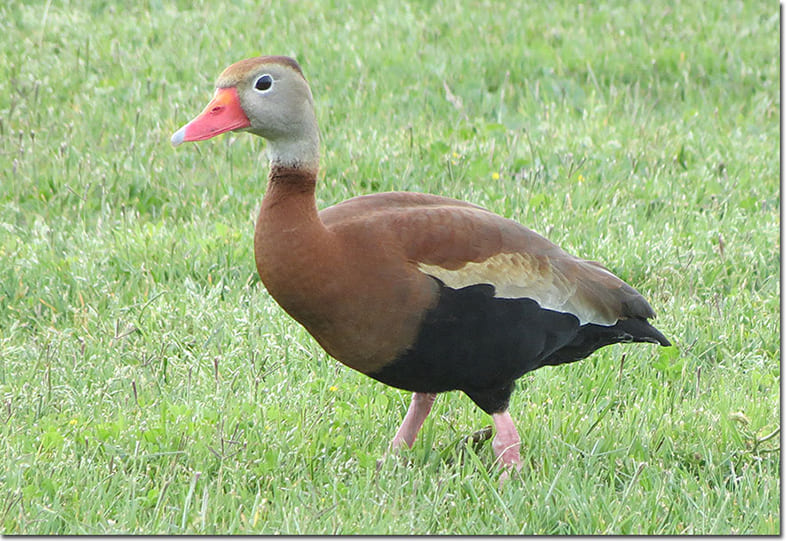
Lower belly black, rusty chest. White eye ring. Photograph © Sam Crowe
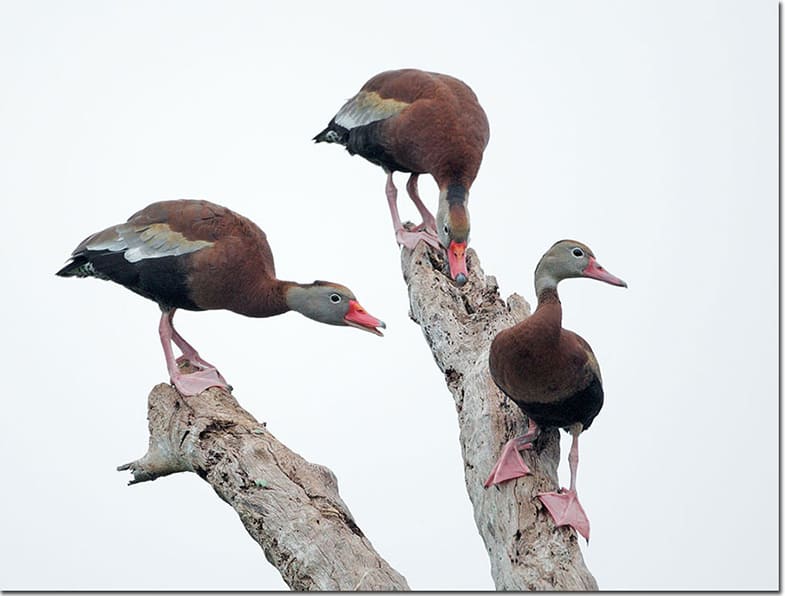
The Black-bellied Whistling-Duck was previously known as the Black-bellied Tree-Duck, for its habit of loafing in trees. Photograph © Tom Grey.
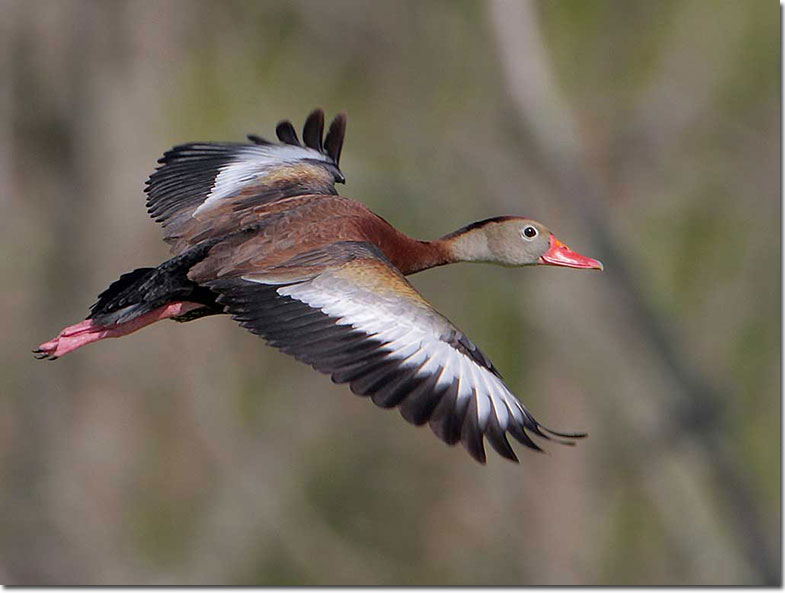
Large band of white visible on the top of the wing in flight. Photograph © Greg Lavaty.
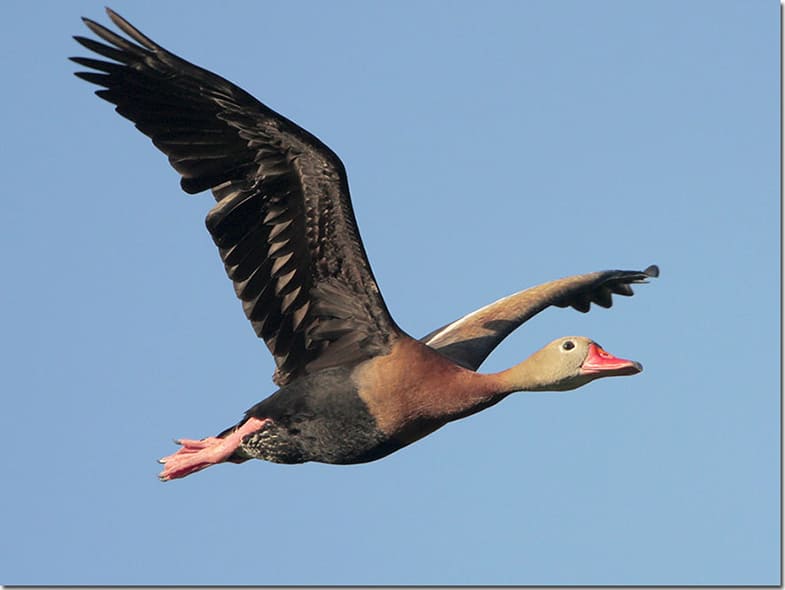
Long wings are dark underneath. Photograph © Greg Lavaty
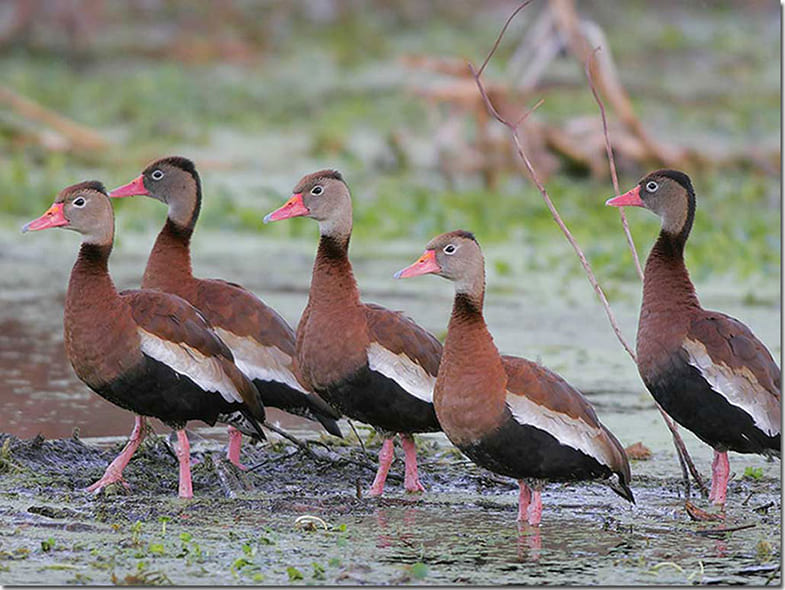
Often seen in groups. Pink legs match the color of the bill. Photograph © Greg Lavaty

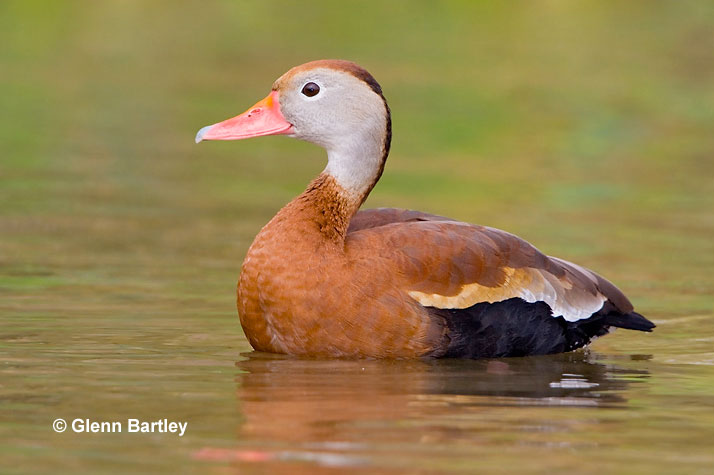

Myrna Kurle
Friday 5th of May 2023
Spotted today on pond in Broken Arrow Oklahoma. 5/5/2023